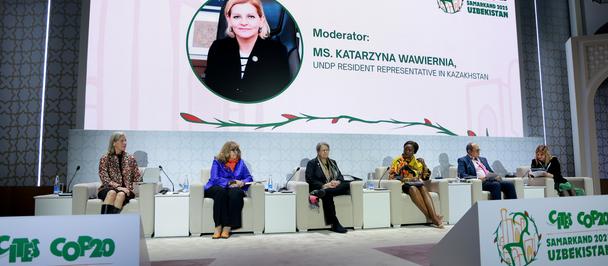Ecotourism in Kazakhstan: balancing humans and nature
June 26, 2023
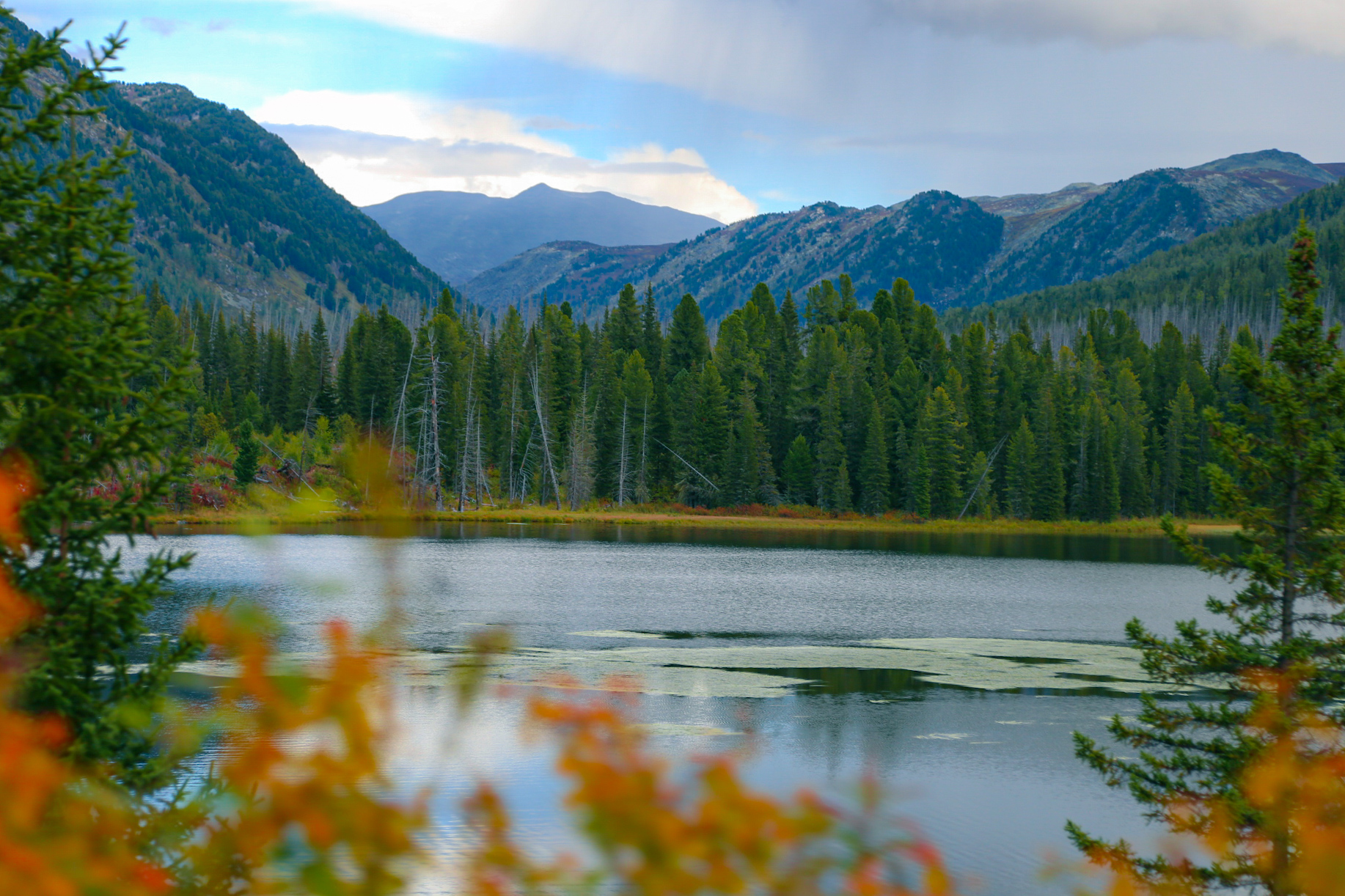
Ecotourism in Kazakhstan is becoming increasingly popular. Nowadays, tourist routes and trails, as well as virtual tours, are being developed in the country, sustainable business models are introduced, and the legislative framework is being improved to reflect these changes.
With a rich variety of natural landscapes, flora and fauna, Kazakhstan is making efforts to balance the interests of the nature preservation with the interests of the local communities. The country’s national parks play a key role in the conservation of biodiversity and ecosystems – their development has a positive effect on employment and economic growth of the regions.
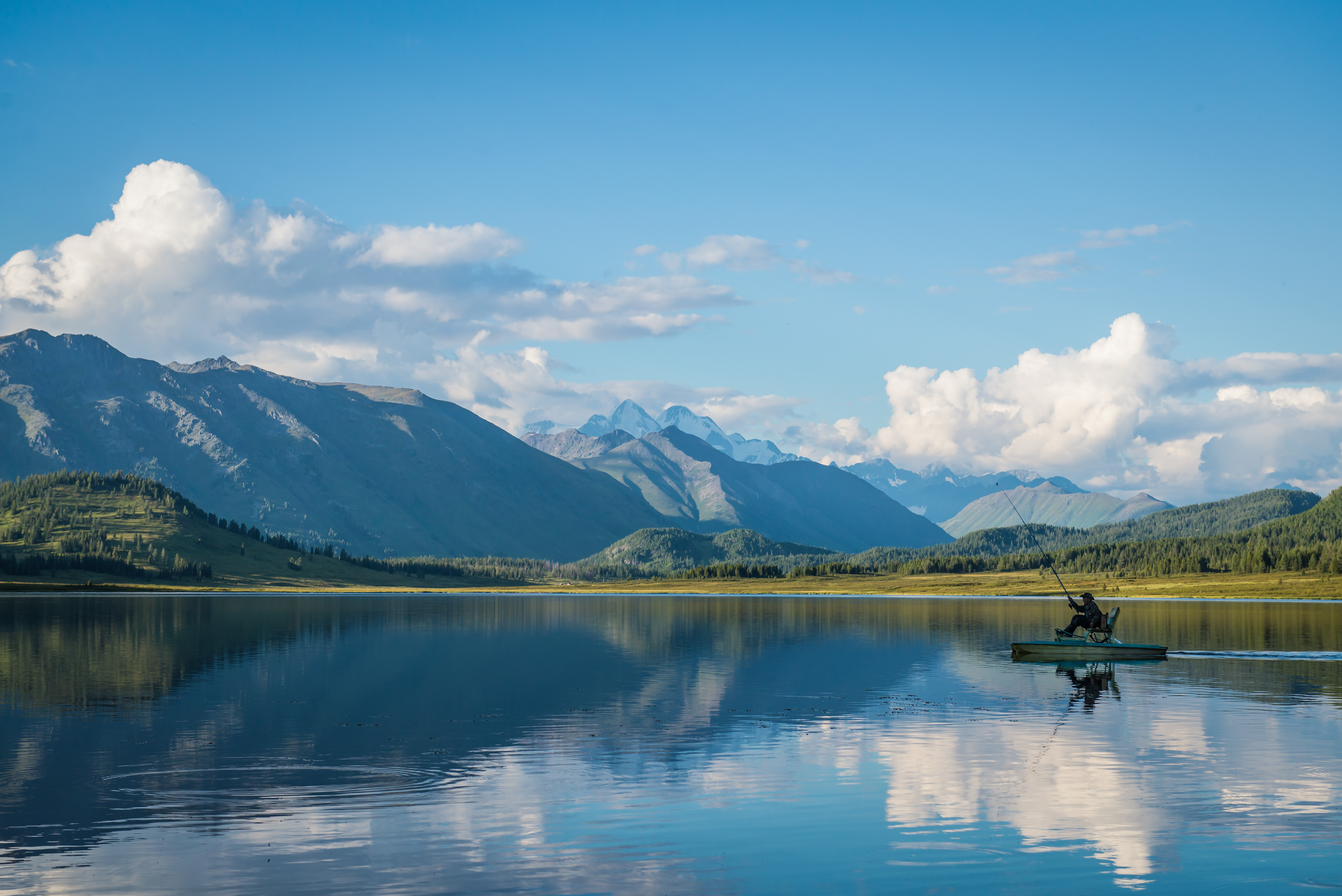
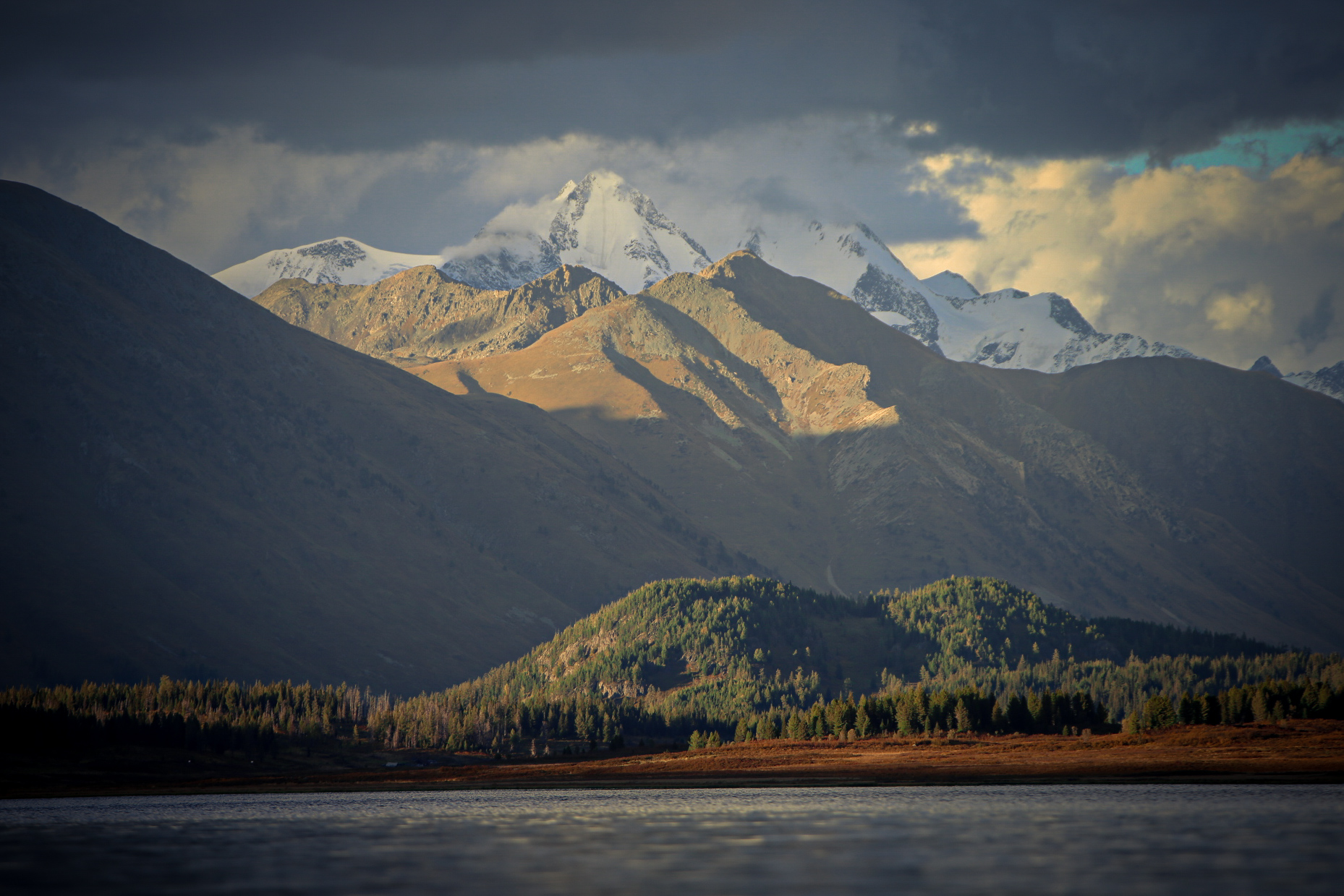
Katon-Karagai National Park is the largest park in Kazakhstan. It is located in the east of the country and covers an area of more than 640,000 hectares
Katon-Karagai and Kolsai Koldery National Parks are not only two of the largest national parks in Kazakhstan, they are the most favorite places for travelers to visit. The parks are included in the UNESCO World Network of Biosphere Reserves. They impress with their picturesque landscapes, mountains and forests, high-altitude lakes and waterfalls. These parks are home to rare Red List animals and endemic plant species.
Today, the development of national parks and, in general, specially protected natural areas (protected areas) is not possible without the use of high technologies. Among the new IT solutions are virtual tours, which were developed and implemented in Katon-Karagai and Kolsai Koldery National Parks in 2022. Thanks to virtual tours, people have new opportunities to travel. Although, modern solutions cannot completely replace a person's stay in nature, they help national parks become more accessible to tourists from all over the world, positively influencing the sustainable tourism development in protected areas.
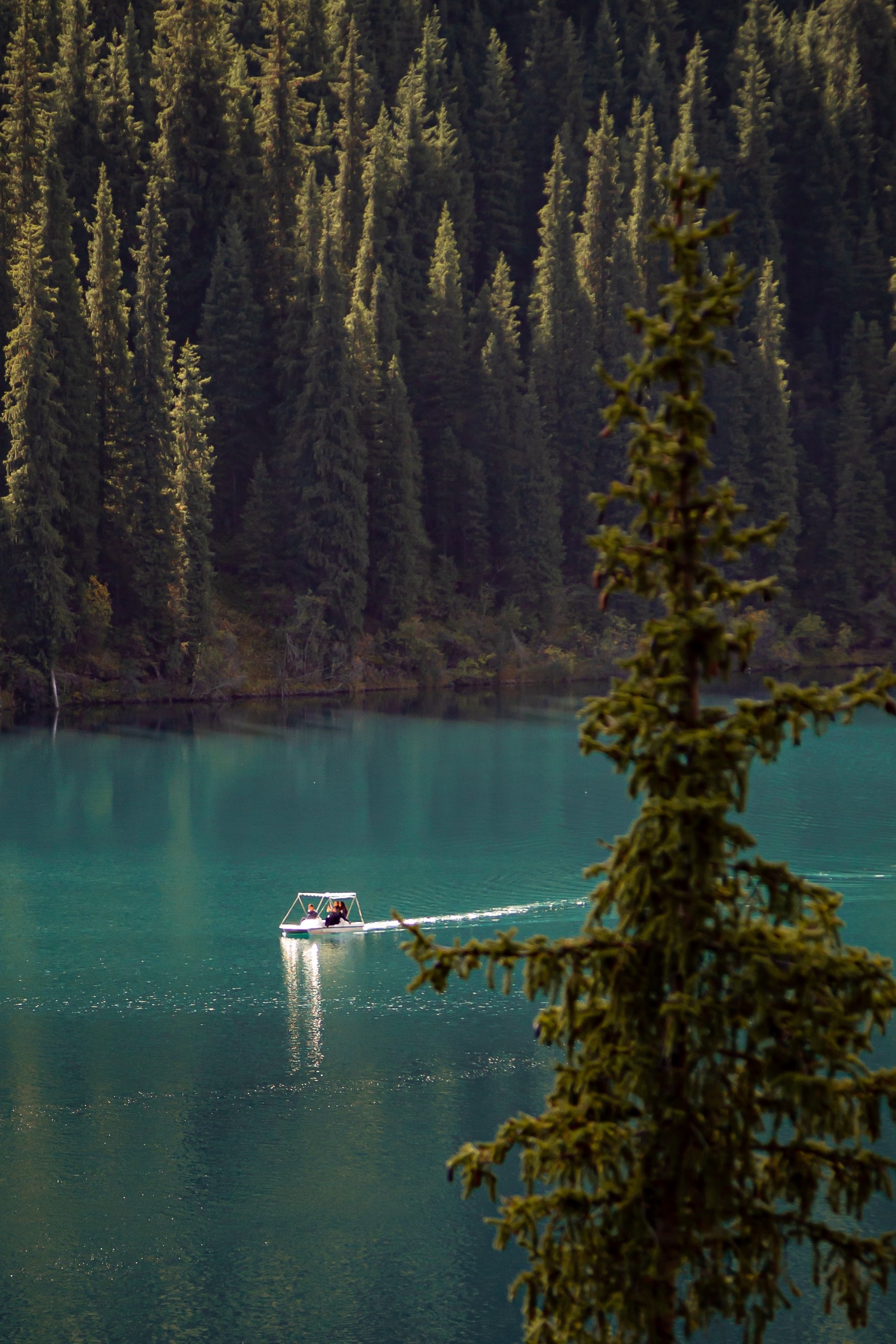
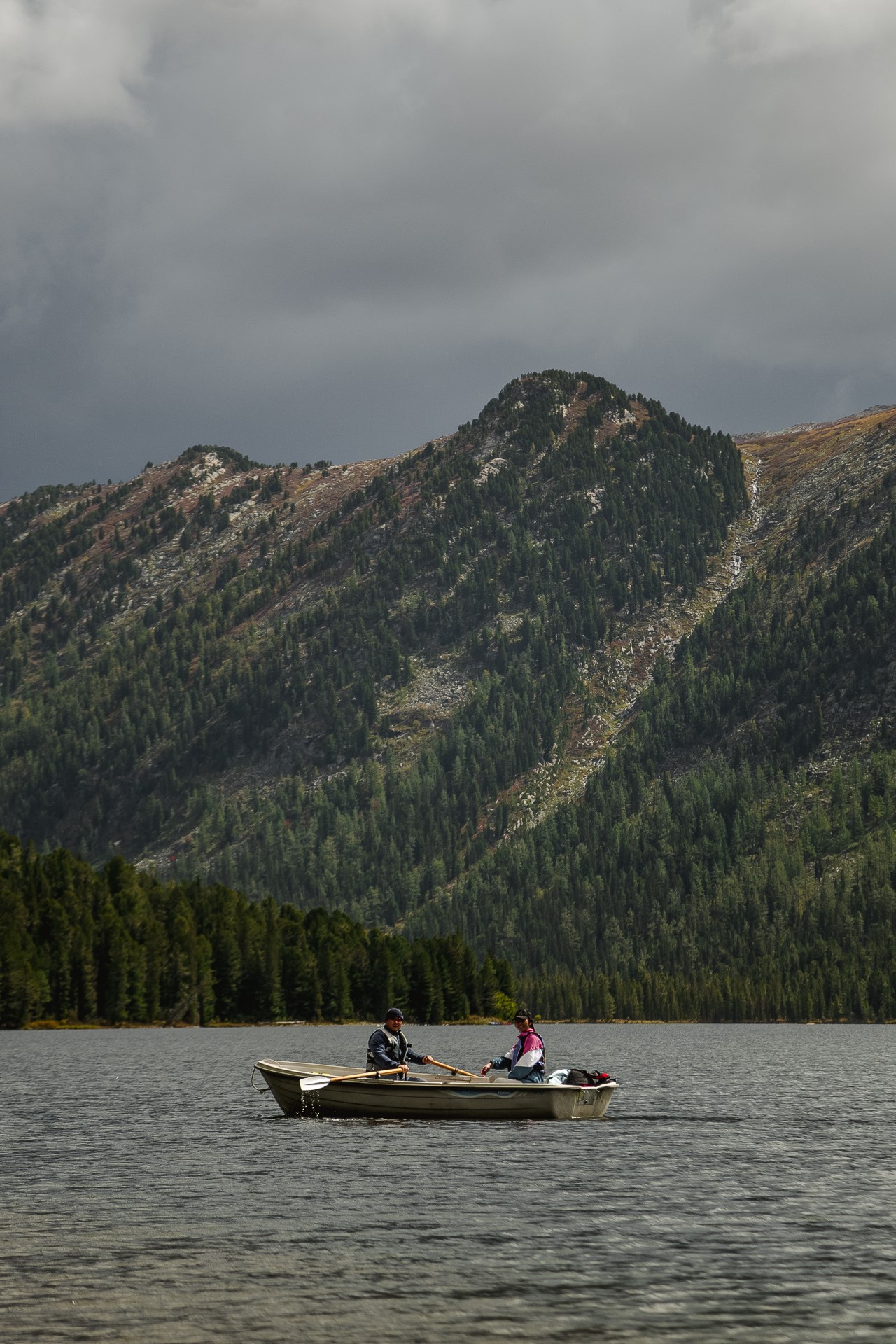
Kolsai Koldery, the National Nature Park, is located in the south-east of Kazakhstan and it is one of the most visited protected areas of the country
In recent years, Kolsai Koldery National Park has become a center of attraction not only for local tourists, but also for travelers from abroad. The park is the most visited in Kazakhstan. Over the past 10 years, the number of tourists has increased 10 fold – almost 200,000 people visited the national park in 2022.
Hamit Akhmetov has been working in the tourism and environmental education fields for more than 24 years and is a researcher at Kolsai Koldery National Park. He points out that the park has no shortage of visitors today, but an uneven recreational load on tourist routes and trails has to be urgently addressed in his opinion. At the moment, there are seven tourist routes in the national park, but only two are the busiest — Lower Kolsai Lake and Kaiyndy Lake. The tourism specialist is confident that with the help of a virtual tour technology, the national park will be able to reduce the burden on these routes.
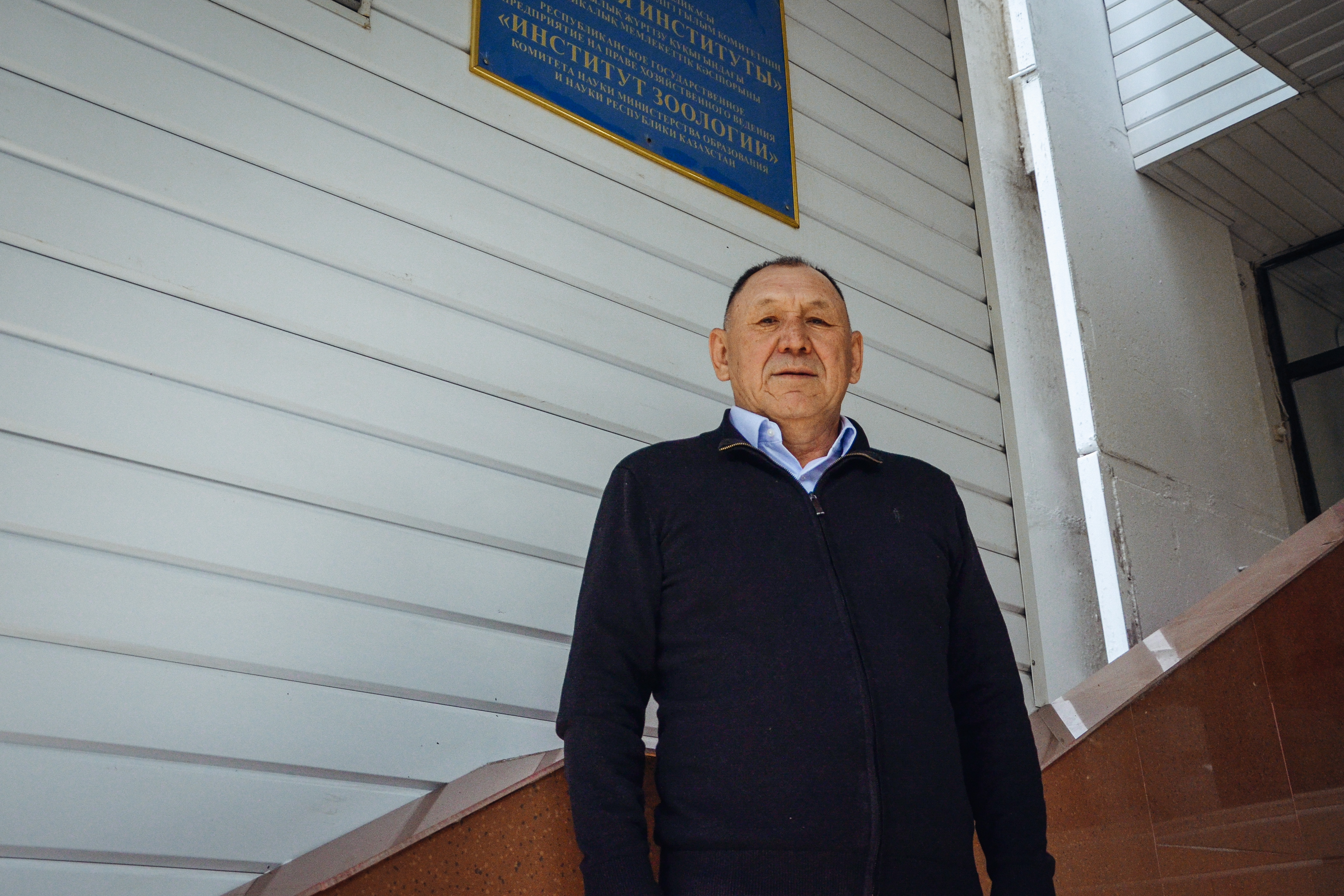

Hamit Akhmetov is working on the development of ecotourism in Kolsai Koldery National Park
"90 percent of the national park visitors only visit the Lower Kolsai Lake and unfairly bypass the Middle and Upper Lakes, which are most beneficial from the point of view of the human psychocomfort. On the Kurmetty and Saty gorges’ routes, tourists can retire into the wilderness, and enjoy the singing of the birds, the murmur of streams, and the picturesque landscapes. Virtual tours introduce people to the diversity of the national park’s nature and inspire the interest of potential tourists in visiting other routes," said Hamit Akhmetov.
If in Kolsai Koldery National Park the virtual tours help to decrease the load on popular routes, then in Katon-Karagai National Park they are intended to attract new visitors.
Serik Konurbaev, a tourism specialist in Katon-Karagai National Park, notes that virtual tours play an important role in promoting protected areas not only among local tourists, but also among foreign tourists, who currently represent only 5 percent of the total number of visitors in Katon-Karagai Park.
"The tourist season in the Katon-Karagai National Park is extremely short – from June to September. However, due to virtual tours, anyone can take a virtual walk in picturesque places and plan a future trip to the national park more thoroughly," said Serik Konurbayev.
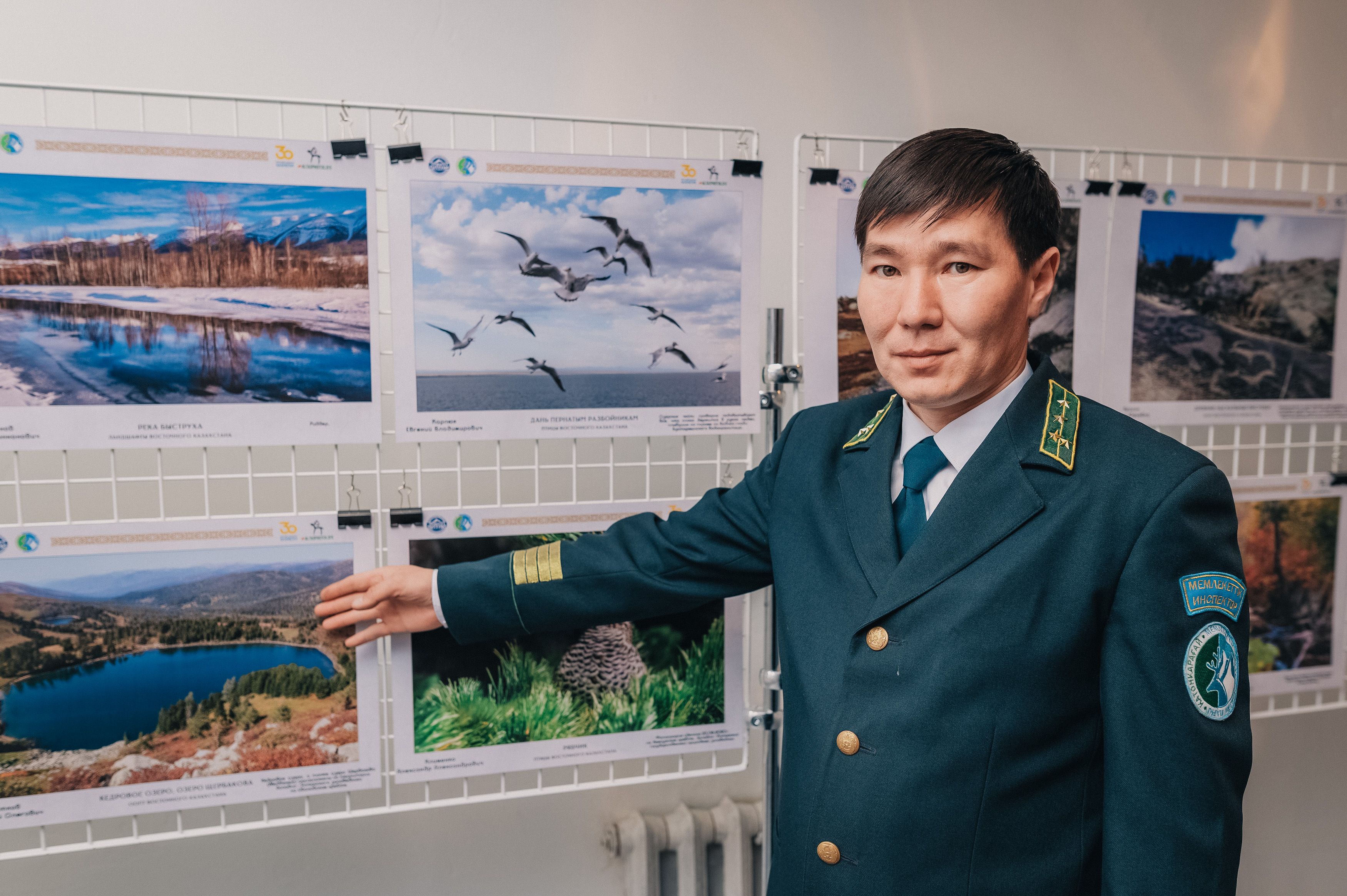
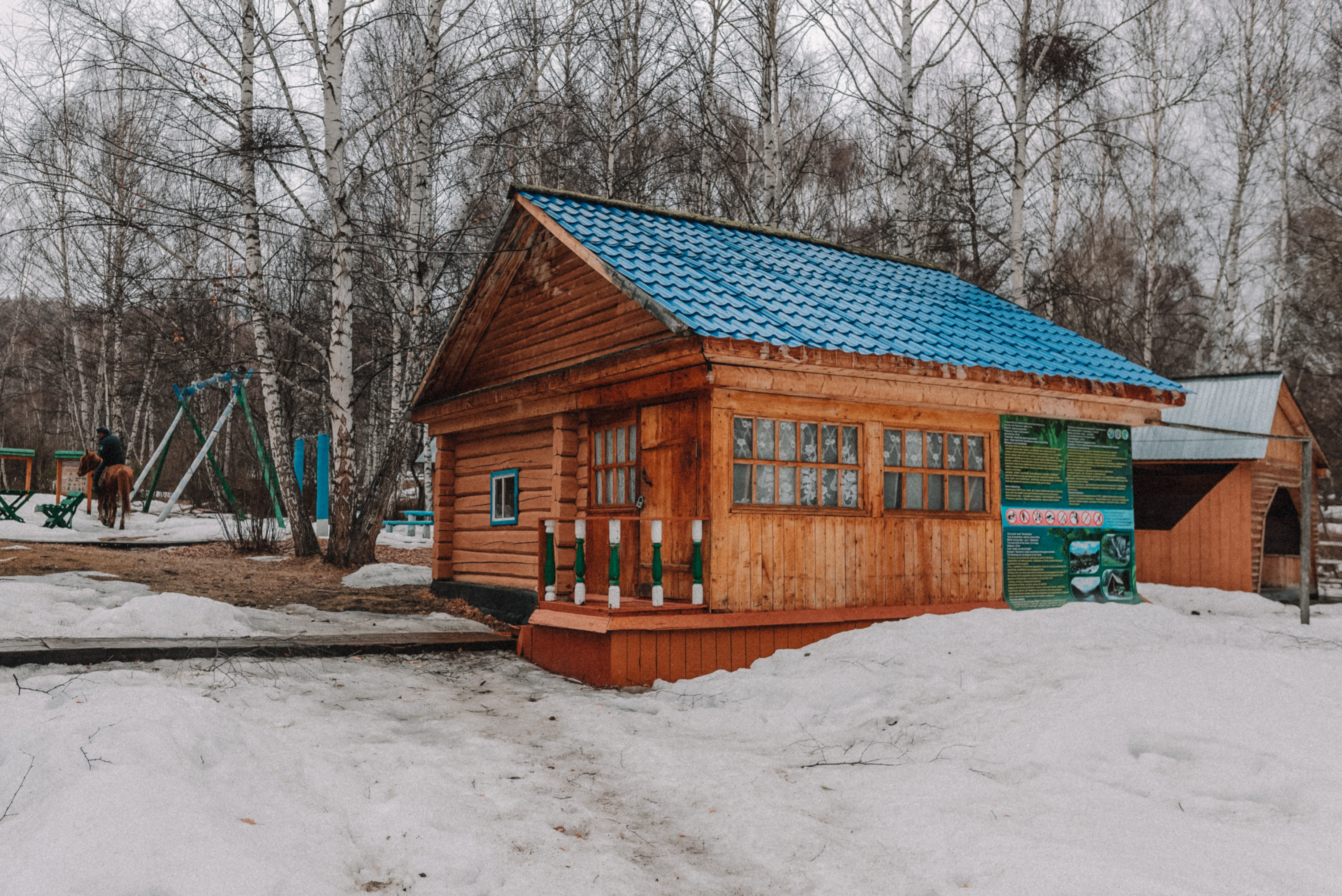

Serik Konurbaev, a tourism specialist at Katon-Karagai National Park, is confident that virtual tours will help in the promotion and development of the national park
He also notes that the number of travelers from abroad primarily depends on the level of safety measures in place and the quality of services provided. New information about guest houses, transportation and other services is gradually added to the National Park’s website and posted on its social networks. Concurrently, work is underway to develop new routes and trails. In recent years, there has been an increase in the number of tourists in Katon-Karagai: 7,040 people visited the park in 2022. It is expected that this trend will continue this year.
"We invite tour operators to cooperate with us, and we also work with an international partner from Mongolia, thanks to which more and more foreign tourists learn about Katon-Karagai National Park," added Serik Konurbayev.
The park’s leadership hopes that these measures will help attract not only a large number of tourists, but also solve the problem of shortage of staff in the national park.

Katon-Karagai National Park
The development and implementation of virtual tours to nature reserves and national parks of Kazakhstan is implemented by the United Nations Development Programme (UNDP) with the support of the Global Environment Facility (GEF). To date, within the framework of the project, virtual tours have been developed for the five protected areas of the country: West Altai Nature Reserve, Katon-Karagai, Sairam-Ugam, Tarbagatai and Kolsai Koldery National Parks.
Tours are an interactive presentation with 3D panoramic images and aerial panoramas, and contain information about tourist routes and trails that allow the user to move in the selected space, creating a sense of presence. To develop virtual tours, UNDP specialists took pictures at 79 locations in pilot protected areas.
Certainly, the development of ecotourism in national parks and reserves is not possible without interaction with local communities. For several years, the development of sustainable tourism in Kazakhstan has been carried out within the framework of the UNDP-GEF project, one of the key tasks of which is to expand opportunities for the local communities to engage in the provision of services in the field of ecotourism.
Today, there are about 80 guest houses in Saty Village, which is only 5 km from Kolsai Koldery National Park. Entrepreneurs from this rural community offer travelers accommodation, catering, horseback riding, transportation services, as well as various master classes. In recent years, yurt houses have been particularly popular among the most sophisticated travelers, allowing them to experience the culture and customs of the Kazakh people.
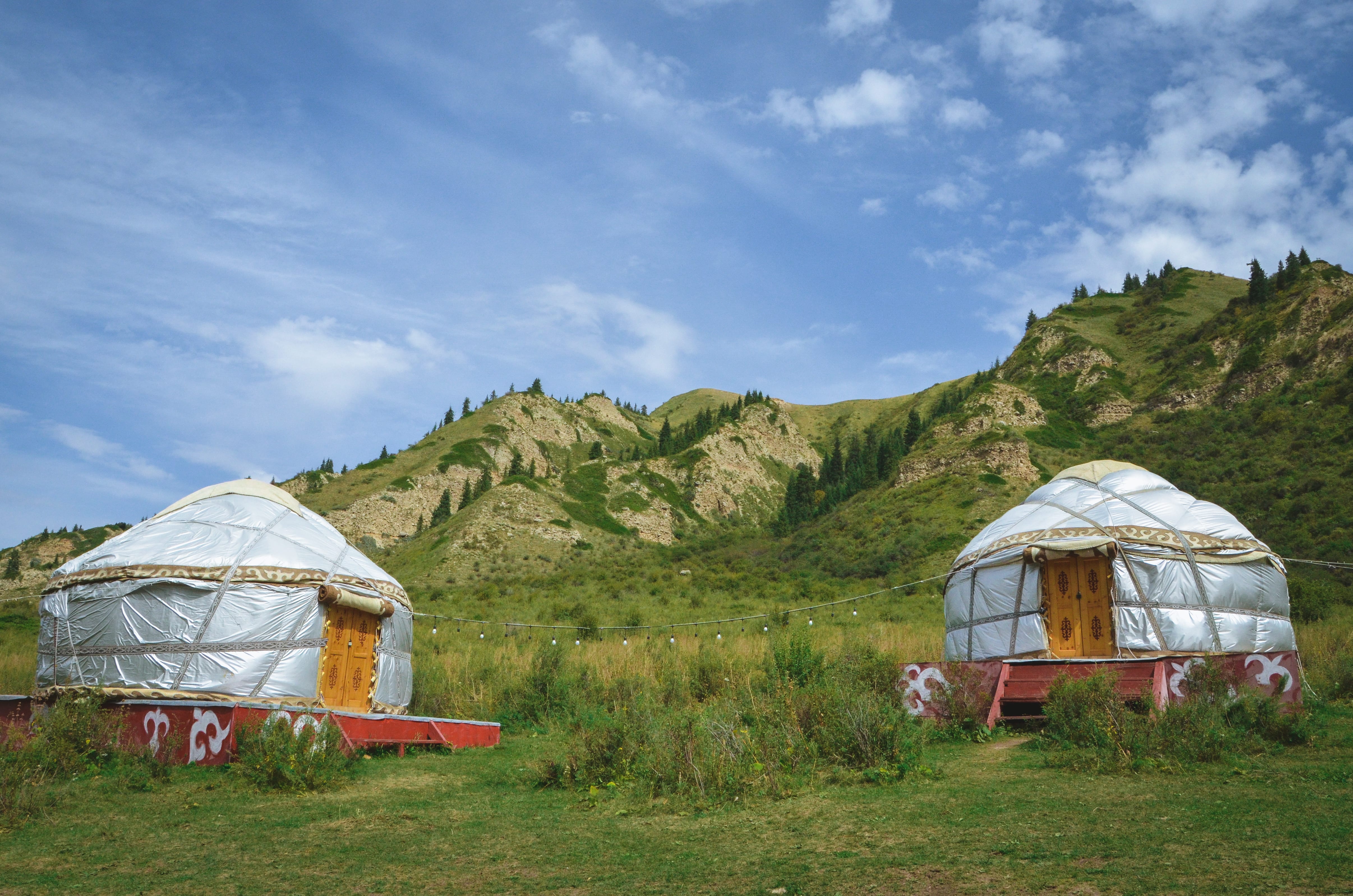
Yurt guest houses in Kolsai Koldery National Park
Aliya Temirova is the owner of yurt guest houses, the business she started in 2022. The entrepreneur acquired three Kazakh yurts as part of Eco Damu preferential lending program and installed them near Kolsai Lakes. Tourists are offered the opportunity to not only rent yurts for their stay, but also to get acquainted with the Kazakh national dishes.
"Yurt is a traditional dwelling of our ancestors, and today they are in the greatest demand among foreign tourists. Now we are promoting our services through social networks, we also plan to be placed on international booking sites in order to attract travelers from abroad," said Aliya.
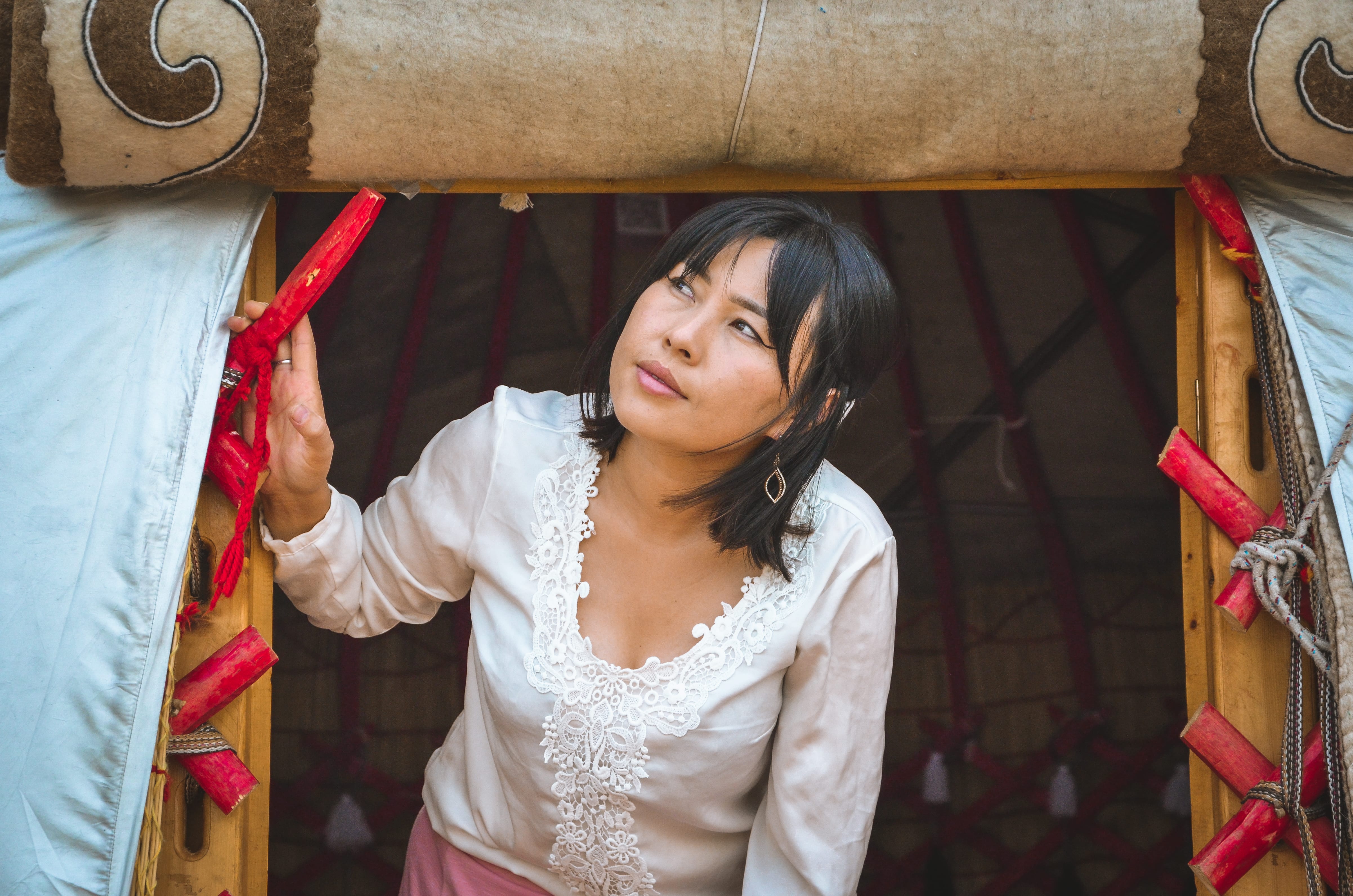
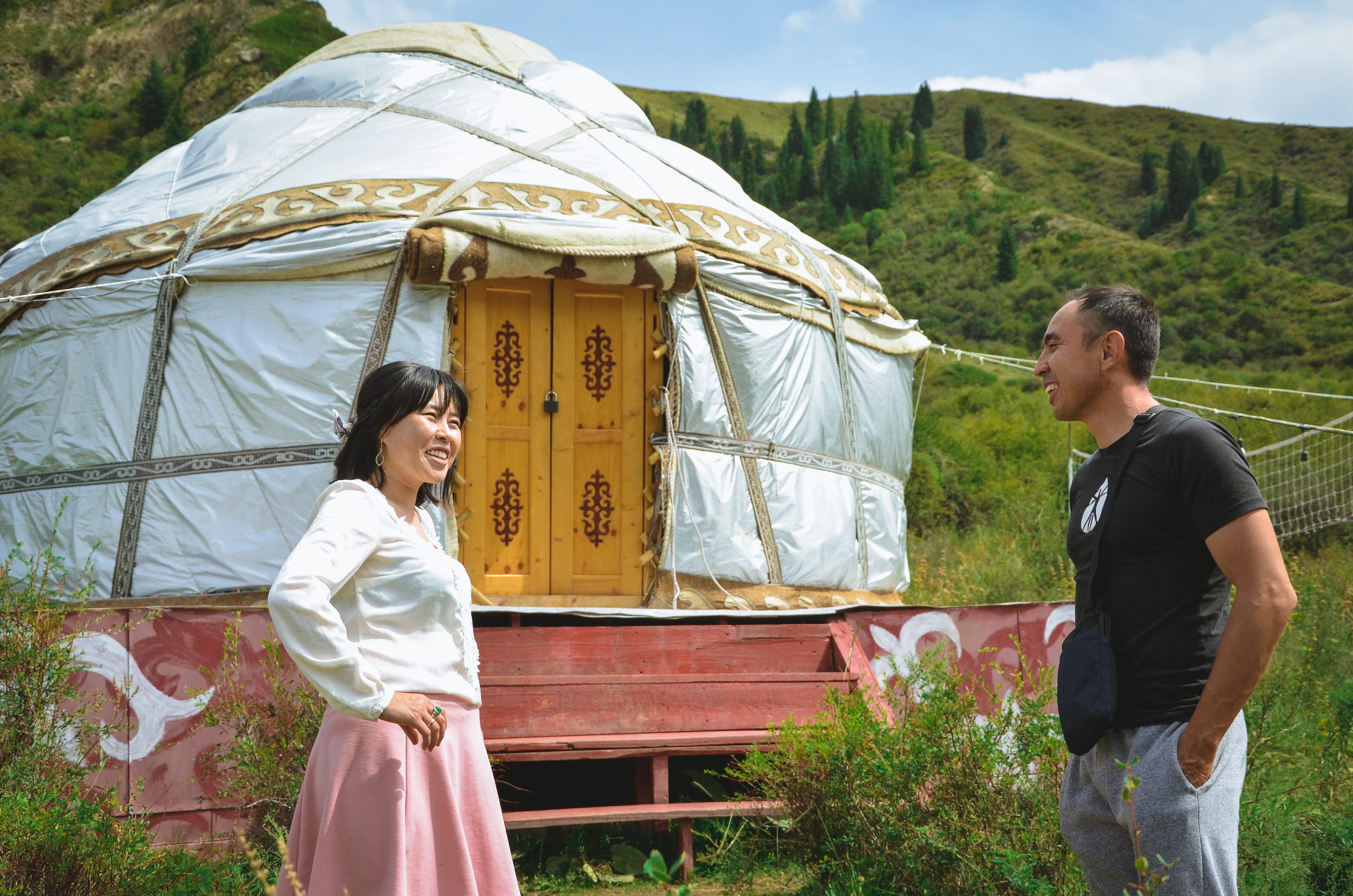
Aliya Temirova, a businesswoman from a village near Kolsai Koldery National Park
Aliya runs her business with her husband and her brother, who graduated with a tourism major. The entrepreneur shares that the well-established infrastructure of the national park helps rural residents build sustainable businesses and develop ecotourism in the region.
"We plan to increase the number of yurts and promote Kazakh culture", - the woman shares.
There aren’t many guest houses in Katon-Karagai National Park – only five, but the region is famous for folk artisans who skillfully work with eco-friendly materials – felt and wood.
Bakytbek Jalymbekov, a resident of the village of Katon-Karagai, has been engaged in wood carving for 10 years. In his workshop, he makes souvenirs and products in the national style. The craftsman admits that the work brings him pleasure and notes that the products are primarily focused on safety and environmental friendliness.
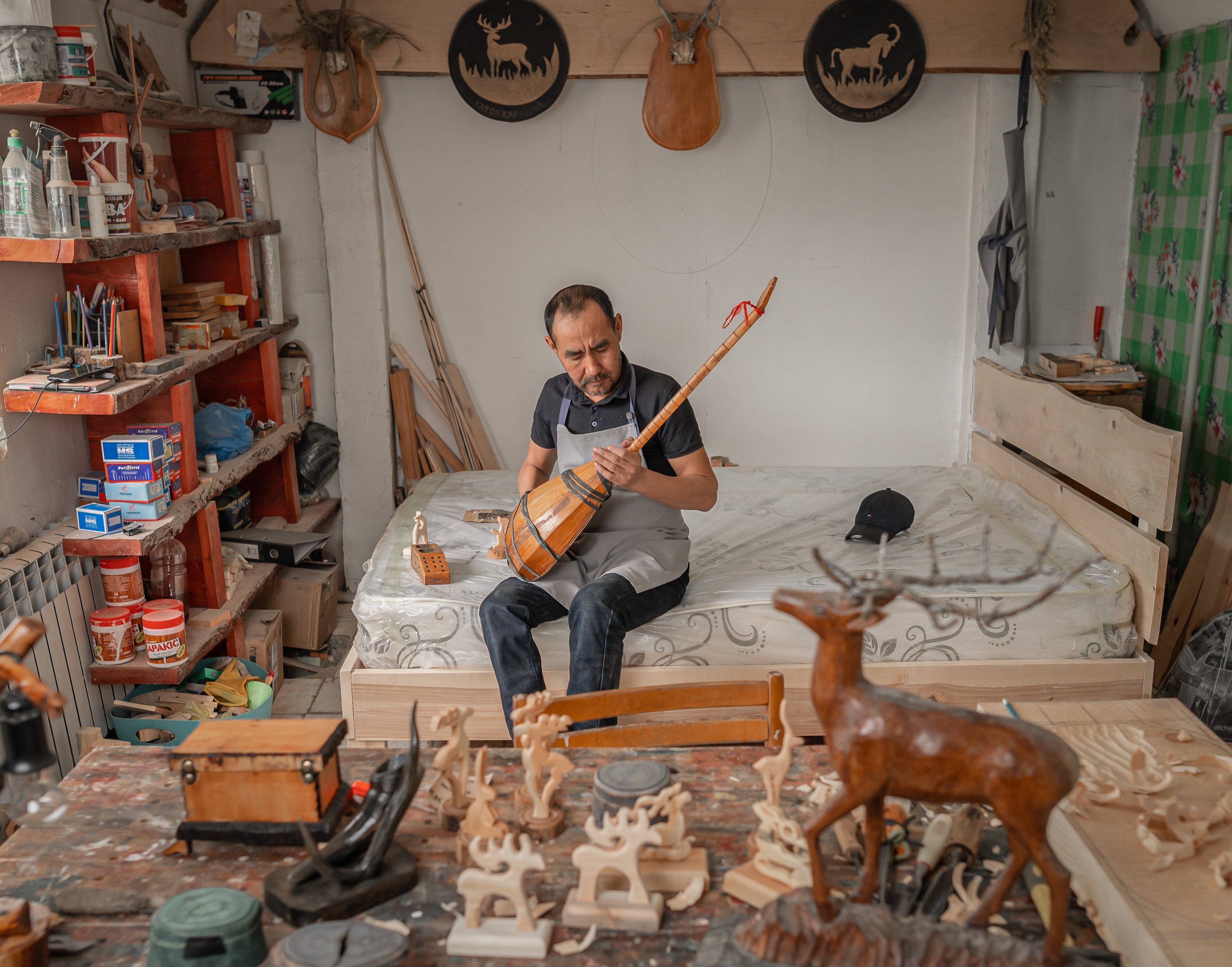
Bakytbek Jalymbekov is a well-known artisan in the East Kazakhstan region. He has been engaged in wood carving for about 10 years
"Our ancestors loved to work with wood, creating real works of art – animal figurines, dishes and musical instruments. I believe that this craft teaches people to interact with nature, because it does not harm the environment," says Bakytbek Jalymbekov.
In 2019, the entrepreneur became one of the 15 participants of the training of Qazaq- Oner the Handicraft Center, organized with the support of the UNDP. Today Bakytbek Alymbekov successfully applies these skills in the development of his own business, which helps him earn income and provide for his family. Thanks to the development of tourism in the region, the entrepreneur receives private orders for the wood products, and his souvenirs and products are in demand among the visitors to Katon-Karagai National Park.
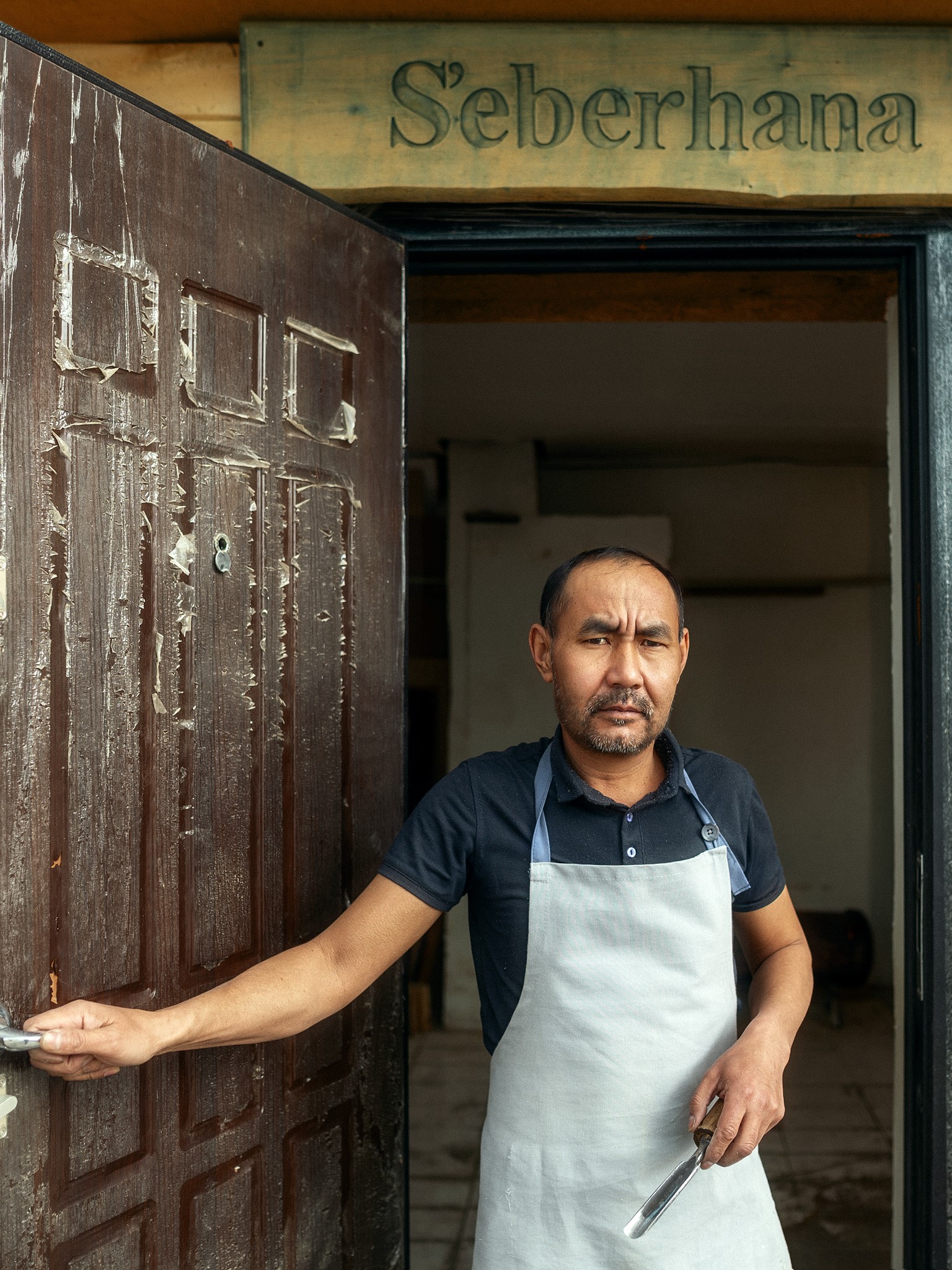
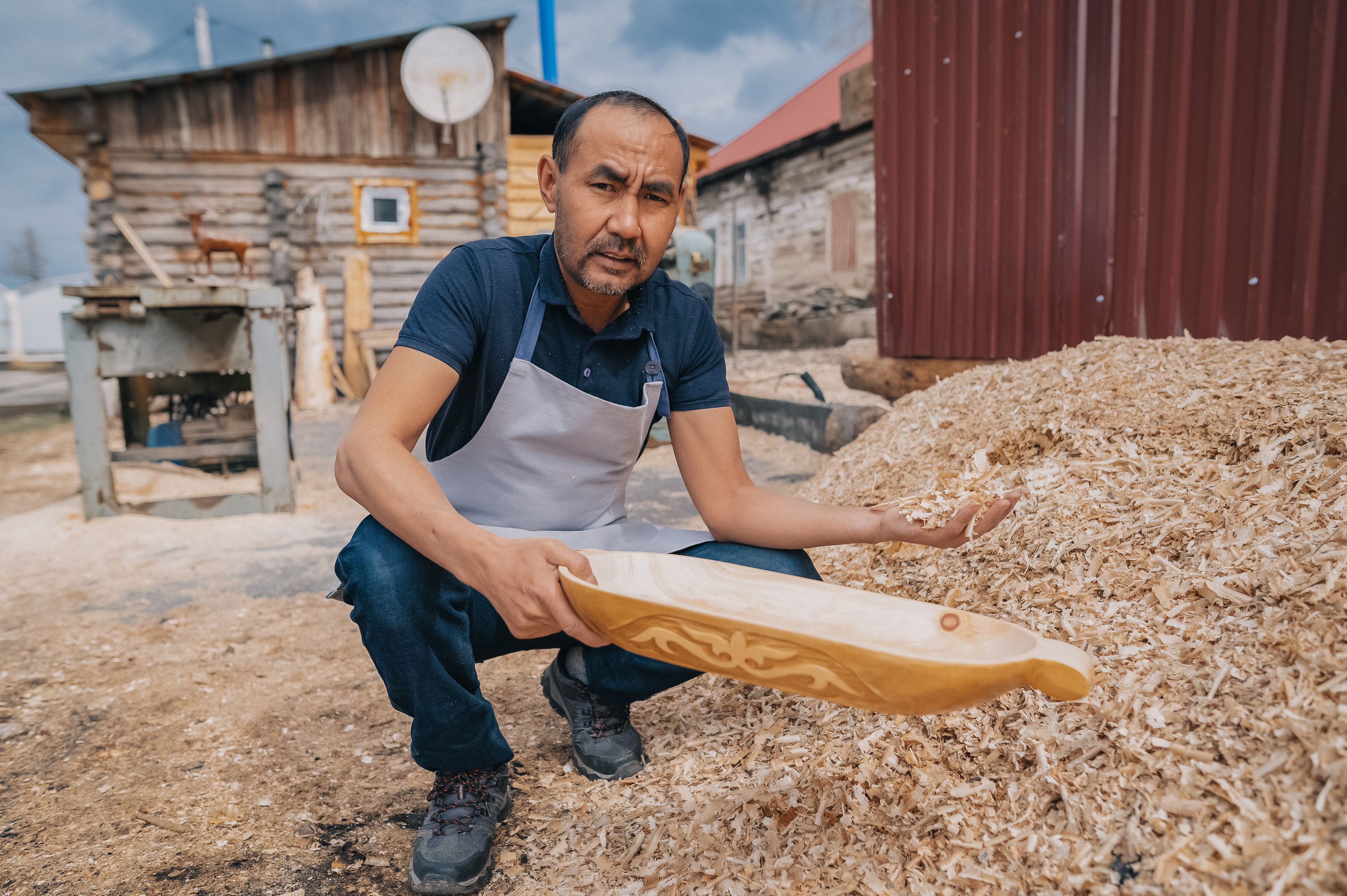
In his small workshop, the artisan creates products using eco-friendly materials
Bakytbek believes that natural areas have great potential for the development of ecotourism, so that local communities have the opportunity not only to do business, securing a decent future for themselves, but also to contribute to the preservation of biodiversity.
Nowadays, national parks and nature reserves of Kazakhstan represent a model for the development of a sustainable future: people and nature get along on their land, and the use of high technologies changes the traditional beliefs about traveling in the wild, promoting the development of eco-tourism and local communities.

 Locations
Locations



